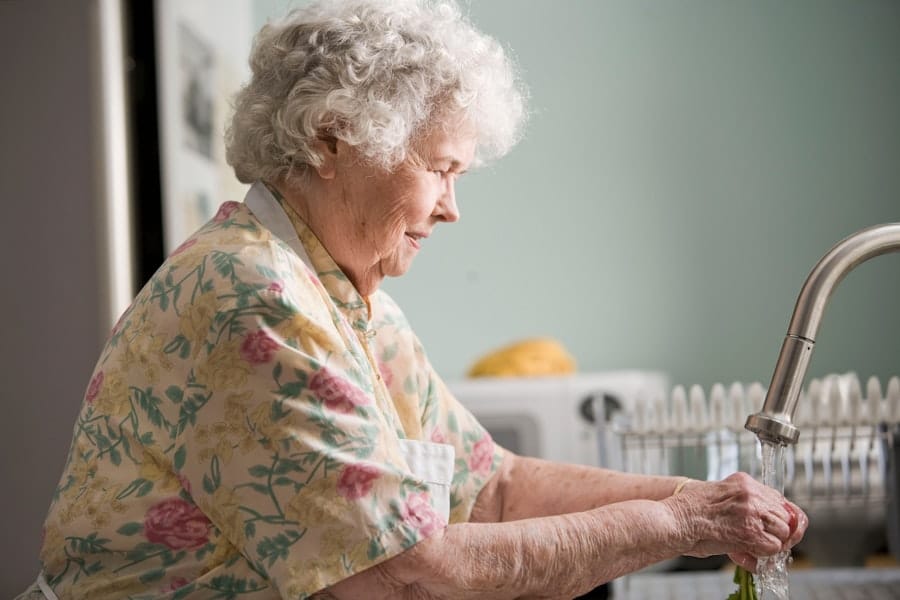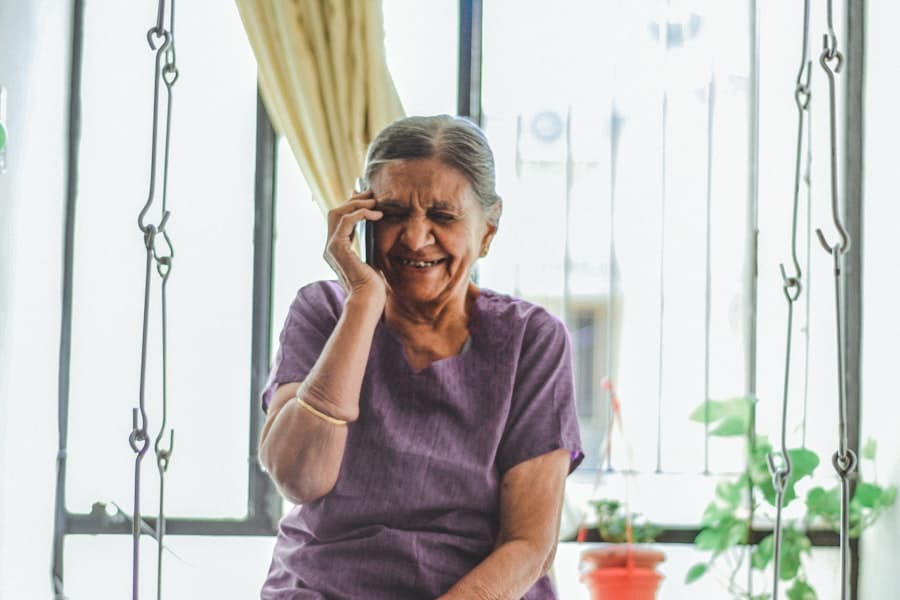Aging-in-place care models have gained significant traction in recent years as a viable alternative to traditional long-term care facilities. This approach allows older adults to remain in their own homes while receiving the necessary support and services tailored to their individual needs. The concept is rooted in the belief that maintaining independence and familiarity with one’s environment can greatly enhance the quality of life for seniors.
As the global population ages, with projections indicating that by 2050, nearly 2 billion people will be over the age of 60, the demand for effective aging-in-place solutions is more pressing than ever.
It emphasizes a holistic approach that not only addresses physical health but also considers emotional and social well-being.
By leveraging technology, particularly the Internet of Things (IoT), caregivers can provide more efficient and responsive care. This integration of technology into aging-in-place models not only enhances the safety and comfort of seniors but also alleviates some of the burdens on family members and professional caregivers. As we delve deeper into the role of IoT in this context, it becomes clear that these innovations are reshaping how we think about aging and care.
Key Takeaways
- Aging-in-place care models aim to support seniors in living independently in their own homes as they age
- IoT plays a crucial role in aging-in-place care by enabling remote monitoring and management of health and safety
- IoT devices such as wearables, smart sensors, and cameras can monitor vital signs, detect falls, and ensure home safety
- IoT solutions for medication management include smart pill dispensers and medication reminder systems
- Smart home automation systems can assist seniors with daily tasks, such as turning on lights and adjusting thermostats, to enhance their independence
The Role of IoT in Aging-in-Place Care
The Internet of Things (IoT) refers to the interconnected network of devices that communicate and exchange data over the internet. In the context of aging-in-place care, IoT plays a transformative role by enabling real-time monitoring and management of health and safety conditions for seniors. This technology allows for a proactive approach to care, where potential issues can be identified and addressed before they escalate into more serious problems.
For instance, IoT devices can track vital signs such as heart rate, blood pressure, and glucose levels, sending alerts to caregivers or healthcare providers if any readings fall outside of normal ranges. Moreover, IoT facilitates seamless communication between various stakeholders involved in an elderly person’s care. Family members, healthcare professionals, and caregivers can access real-time data about the individual’s health status, ensuring that everyone is informed and can make timely decisions.
This interconnectedness not only enhances the quality of care but also fosters a sense of community and support for seniors who may otherwise feel isolated. As technology continues to evolve, the potential applications of IoT in aging-in-place care are expanding, paving the way for more personalized and efficient care solutions.
IoT Devices for Monitoring Health and Safety

A variety of IoT devices are specifically designed to monitor the health and safety of seniors living independently. Wearable devices, such as smartwatches and fitness trackers, have become increasingly popular among older adults. These devices can monitor physical activity levels, sleep patterns, and vital signs, providing valuable insights into an individual’s overall health.
For example, a smartwatch equipped with heart rate monitoring capabilities can alert users to irregular heartbeats or other concerning changes, prompting them to seek medical attention if necessary. In addition to wearables, home-based sensors play a crucial role in ensuring safety for seniors. Motion sensors can detect falls or unusual inactivity within the home, sending alerts to caregivers or family members if something seems amiss.
Furthermore, environmental sensors can monitor conditions such as temperature and humidity, ensuring that the living environment remains safe and comfortable. By integrating these devices into an aging-in-place model, caregivers can create a comprehensive safety net that addresses both health monitoring and environmental safety.
IoT Solutions for Medication Management
Medication management is a critical aspect of healthcare for seniors, as many older adults take multiple prescriptions that require careful oversight. IoT solutions have emerged as effective tools for enhancing medication adherence and ensuring that individuals take their medications as prescribed. Smart pill dispensers are one such innovation; these devices can be programmed to dispense the correct dosage at scheduled times while sending reminders to users via smartphone notifications or alarms.
If a dose is missed, caregivers can receive alerts, allowing them to intervene promptly. Additionally, IoT-enabled medication management systems can track medication usage patterns over time. By analyzing this data, healthcare providers can identify trends in adherence and make necessary adjustments to treatment plans.
For instance, if a patient consistently misses doses on weekends, a healthcare provider might explore potential barriers to adherence during that time frame. This level of insight not only improves individual health outcomes but also contributes to more efficient healthcare delivery by reducing hospital readmissions related to medication mismanagement.
Smart Home Automation for Aging-in-Place Care
Smart home automation technologies are revolutionizing the way seniors interact with their living environments. These systems allow for the control of various home functions through voice commands or smartphone applications, making it easier for older adults to manage their daily activities without assistance. For example, smart lighting systems can be programmed to turn on automatically when someone enters a room or adjusted remotely by family members to ensure adequate illumination during nighttime hours.
Moreover, smart thermostats can help maintain comfortable living conditions by learning the preferences of residents and adjusting temperatures accordingly. This not only enhances comfort but also promotes energy efficiency—a significant consideration for seniors on fixed incomes. Home automation systems can also integrate security features such as smart locks and doorbell cameras, providing peace of mind for both seniors and their families.
By creating a more responsive and user-friendly living environment, smart home automation plays a vital role in supporting aging-in-place initiatives.
IoT-enabled Communication and Socialization

Social isolation is a significant concern for many seniors living independently, as it can lead to feelings of loneliness and depression. IoT technologies offer innovative solutions to foster communication and socialization among older adults. Video calling platforms integrated with smart devices enable seniors to connect with family members and friends easily, bridging geographical distances and enhancing emotional well-being.
For instance, tablets equipped with user-friendly interfaces can be set up in homes to facilitate regular video chats with loved ones. Additionally, social engagement platforms designed specifically for seniors can encourage participation in community activities or virtual events. These platforms often include features such as group chats, forums, or even virtual games that promote interaction among users.
By leveraging IoT-enabled communication tools, caregivers can help combat social isolation while empowering seniors to maintain meaningful relationships with others.
Data Analytics and Predictive Maintenance in Aging-in-Place Care
The integration of data analytics into aging-in-place care models offers significant advantages in terms of predictive maintenance and personalized care strategies. By collecting data from various IoT devices—such as health monitors, environmental sensors, and medication management systems—caregivers can analyze trends over time to identify potential issues before they arise. For example, if data indicates that a senior’s activity levels have decreased significantly over several days, caregivers can investigate further to determine if there are underlying health concerns or environmental factors contributing to this change.
Predictive maintenance extends beyond health monitoring; it also applies to home safety features. For instance, if sensors detect that smoke alarms or carbon monoxide detectors are malfunctioning or require battery replacements, alerts can be sent automatically to caregivers or family members for timely intervention. This proactive approach not only enhances safety but also ensures that seniors receive continuous support tailored to their evolving needs.
Challenges and Future Trends in IoT for Aging-in-Place Care
Despite the numerous benefits associated with IoT in aging-in-place care models, several challenges remain that must be addressed for widespread adoption. One significant concern is data privacy and security; as more personal health information is collected through connected devices, ensuring that this data is protected from breaches becomes paramount. Seniors may also face technological barriers due to unfamiliarity with new devices or concerns about their reliability.
Education and training programs tailored specifically for older adults can help mitigate these issues by empowering them with the knowledge needed to navigate these technologies confidently. Looking ahead, future trends in IoT for aging-in-place care are likely to focus on enhancing interoperability among devices and systems. As various manufacturers develop their own solutions, creating standardized protocols will be essential for seamless integration across platforms.
Additionally, advancements in artificial intelligence (AI) could further enhance predictive analytics capabilities within aging-in-place models, allowing for even more personalized care strategies based on individual preferences and health histories. As technology continues to evolve, it holds immense potential to reshape how we approach aging-in-place care—ultimately fostering greater independence and improved quality of life for seniors around the world.
In the evolving landscape of technology, the Internet of Things (IoT) plays a crucial role in supporting aging-in-place care models, offering innovative solutions to enhance the quality of life for the elderly. A related article that delves into the broader implications of technology in our daily lives is this piece on Recode, a technology news website owned by Vox Media. It provides insights into how technological advancements are reshaping various sectors, including healthcare, and highlights the importance of staying informed about these changes to make the most of the opportunities they present.
FAQs
What is IoT?
IoT stands for Internet of Things, which refers to the network of physical devices, vehicles, home appliances, and other items embedded with electronics, software, sensors, actuators, and connectivity which enables these things to connect and exchange data.
What is aging-in-place care?
Aging-in-place care refers to the ability for seniors to live in their own homes and communities safely, independently, and comfortably, regardless of age, income, or ability level.
How does IoT support aging-in-place care models?
IoT supports aging-in-place care models by providing remote monitoring and management of seniors’ health and safety, enabling real-time communication with caregivers, automating home tasks, and providing assistance with daily activities.
What are some examples of IoT devices used in aging-in-place care?
Examples of IoT devices used in aging-in-place care include smart home sensors, wearable health monitors, medication management systems, fall detection devices, and remote communication tools.
What are the benefits of using IoT in aging-in-place care models?
The benefits of using IoT in aging-in-place care models include improved safety and security for seniors, better management of chronic conditions, increased independence and autonomy, and reduced caregiver stress and burden.
Are there any privacy or security concerns with using IoT in aging-in-place care?
Yes, there are privacy and security concerns with using IoT in aging-in-place care, such as the potential for data breaches, unauthorized access to personal information, and the need for secure and compliant data storage and transmission.

